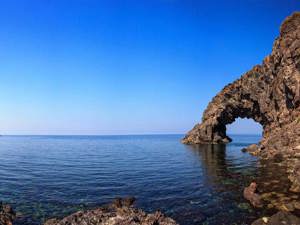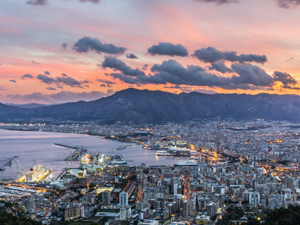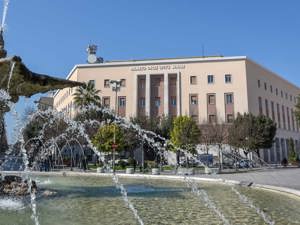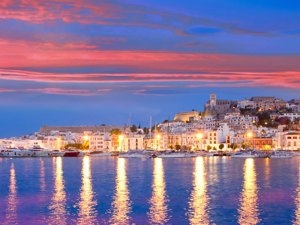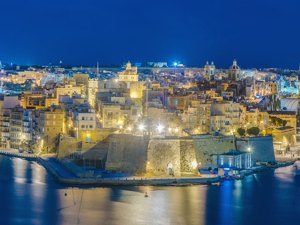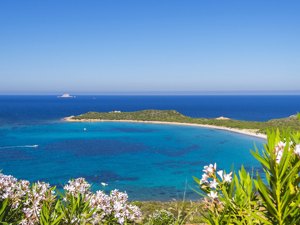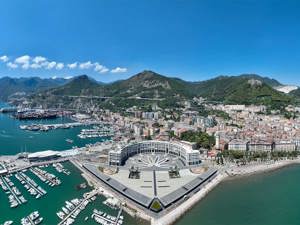









Text by Anna Glik
www.visitsicily.info
Partnership with Booking.com

Pantelleria is a welcoming city and offers different possibilities for accommodation.

Pantelleria Castle stands at the mouth of the old port of the island and was built entirely of volcanic rock. It is thought that the establishment of the castle could date back to the Byzantine or Arab eras, even though its construction has been certified with certainty as dating back to not before the fourteenth century. The castle was initially a fortification to protect maritime trading on the island, and until 1975 it was used as “prison for gentlemen”, while current renovation work is being carried out to turn the castle into a museum.

This temple, situated in the northern part of the Island of Pantelleria, is in Ionic style, but its architectural structure has Punic elements of a previous building. It consists of a rectangular chamber where once there was a statue of the goddess. By comparing it to other sanctuaries located in the Mediterranean area, it is presumed that it was dedicated to the Punic goddess Tanit and then to the Roman goddess Venus.
The Acropolis of S. Marco, positioned on a hill, was inhabited by two civilisations: Punic and Roman. There are numerous cisterns dug out of the rock throughout the hill. Inside, architectural elements have been found and three famous imperial portraits were brought to light, which due to their particular beauty have toured the world, reaching even Japan. They portray Julius Caesar, Antonia Minor and Titus.
Located in Punta Spadillo, in the headquarters of an old military barracks, the museum was opened on 9 August 2010 and is managed by the Forestry Department of the Sicily Regional Government. The two halls inside display examples of stones from the volcanic period. The walls are covered with numerous informative panels recounting the ancient and recent history of eruptions on the island and providing news on volcanos.

The Nature Reserve is situated on the Montagna Grande and has a dense forest of pines and holm oaks in the centre of the island. It is a marvellous natural oasis, and from the top of the mountain there is an unbeatable view. The Island of Pantelleria has 4 types of habitat: the evergreen forest, the forest, the garica scrubland and the Mediterranean steppe.

A tour of the island by boat is the first thing to do once you have arrived on Pantelleria. The tour begins from the main port of Pantelleria and sails towards the principal resorts along the coast. The views of the coastline and the transparencies and reflections of the waves over the black strangely shaped rocks are thrilling to see. The green countryside, which majestically extends from the inland areas to the sea, unspoilt beaches and numerous fascinating and mysterious sea caves, opens onto the spectacle of untouched nature.

The marine environment of the Island of Pantelleria is one of the most unspoilt of the Mediterranean Sea. The splendid sea depths are abundant with fish and it is easy to find rays, whales and dolphins. Scuba diving is very popular among divers wanting to discover the wonders of the depths of Pantelleria. In Punta Fram, scuba diving is fairly challenging both for expert divers and beginners. Taglio di Scauri instead demands a good level of experience.

The Favare are emissions of water vapour from cracks in volcanic rocks that rise up to form spectacular columns of steam. The main one is the Favara Grande, which is found in the middle of enormous masses of rock on the slopes of the Montagna Grande, on the south-west side, in an area known as Fossa del Russo. These steam emissions were used in the past to water the livestock.







